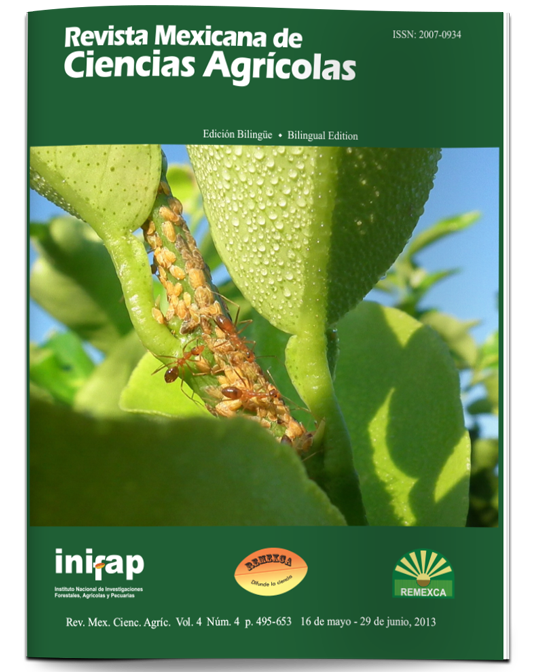Economic projection of representative production units of caprine cattle in the Comarca Lagunera region, Mexico
DOI:
https://doi.org/10.29312/remexca.v4i4.1194Keywords:
kid, goat milk, profitabilityAbstract
In México, caprine cattle breeding is important due to the families living in rural areas who depend on the activity; according to estimations made by the National Institute for Statistics and Geography, there are about 250 thousand animals in México. Nevertheless, traditionally and so as to show support for this activity, the Mexican government, represented by the Ministry of Agriculture, Stockbreeding, Fishing and Food, considers that all the producers who breed goats have access to the same technology, and that all of them produce the same thing. In reality, producers have differences according to the region, entity and even within the same township, and so the type of support they receive must be according to their needs and characteristics. The objective of this paper is to present the economic and financial feasibility projection for a Representative Production Unit (URP, in Spanish), which would produce milk and kid, under an extensive production system for the period that goes from 2008-2018, in the municipality of Lerdo, Durango, located in the region known as Comarca Lagunera, taking as baseline year the economic behavior shown by the URPs in 2008, and deriving from it the identification of the technologic components which need support in order to increase the profitability of this kind of productive system. The data required to undertake this study and establish the milk and kid producing URP, came from panel s of producers presented at the common land of La Loma, state of Durango. The economic and simulation analysis was realized within the agro-economic simulation model MexSim, which results show a positive behavior in the future for the producers focused in this activity, who own a herd of 100 breeding stock, and produce milk and kid.
Downloads
Downloads
Published
How to Cite
Issue
Section
License
The authors who publish in Revista Mexicana de Ciencias Agrícolas accept the following conditions:
In accordance with copyright laws, Revista Mexicana de Ciencias Agrícolas recognizes and respects the authors’ moral right and ownership of property rights which will be transferred to the journal for dissemination in open access. Invariably, all the authors have to sign a letter of transfer of property rights and of originality of the article to Instituto Nacional de Investigaciones Forestales, Agrícolas y Pecuarias (INIFAP) [National Institute of Forestry, Agricultural and Livestock Research]. The author(s) must pay a fee for the reception of articles before proceeding to editorial review.
All the texts published by Revista Mexicana de Ciencias Agrícolas —with no exception— are distributed under a Creative Commons License Attribution-NonCommercial 4.0 International (CC BY-NC 4.0), which allows third parties to use the publication as long as the work’s authorship and its first publication in this journal are mentioned.
The author(s) can enter into independent and additional contractual agreements for the nonexclusive distribution of the version of the article published in Revista Mexicana de Ciencias Agrícolas (for example include it into an institutional repository or publish it in a book) as long as it is clearly and explicitly indicated that the work was published for the first time in Revista Mexicana de Ciencias Agrícolas.
For all the above, the authors shall send the Letter-transfer of Property Rights for the first publication duly filled in and signed by the author(s). This form must be sent as a PDF file to: revista_atm@yahoo.com.mx; cienciasagricola@inifap.gob.mx; remexca2017@gmail.
This work is licensed under a Creative Commons Attribution-Noncommercial 4.0 International license.



